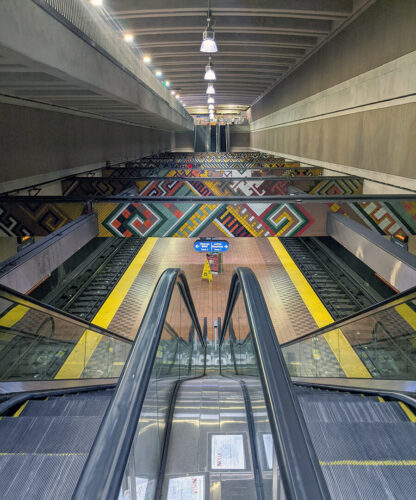In the first decade of the 1900s, Anne Estelle Rice, an American woman artist living in Paris, painted an unusual self-portrait. Adopting the vivid colors and rough brushwork of Fauvism, she depicted a still life of a floral bouquet, a bowl of fruit, and, propped up behind them, a framed painting of herself. Rice shows herself with blue eyebrows, green shadows under her chin, a blue kerchief tied around her head; the strong pops of red in the flowers and fruit contrast with her washed out white face.
“She did not beautify herself by any means,” points out Robyn Asleson, the National Portrait Gallery’s curator of prints and drawings. Nevertheless, her expression conveys a witty self-confidence. The viewer is forced, she added, by Rice’s unconventional self-presentation “to appreciate her as a painter, not as a beautiful thing.“

The near-decade that Rice lived as an exile in the liberating environment of early 20th century Paris afforded her the opportunity to develop this self-assured avant-garde style. While critics of the time described her as “a leader of the Modernists of Paris,” her artistic achievements remained unappreciated in her home country.
The National Portrait Gallery’s exhibit Brilliant Exiles: American Women in Paris, 1900-1939 combines compelling art and strong scholarship to spotlight women like Anne Estelle Rice, who have been mostly omitted from the history of what is considered the birthplace of modernism, but whose accomplishments and life stories deserve retelling.






















